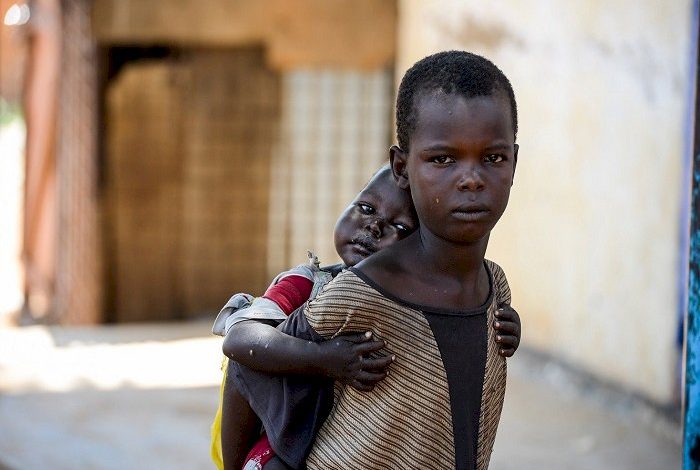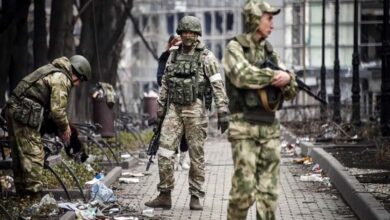Hunger, conflict, and displacement… Death haunts Sudanese children everywhere
Death chases Sudanese children everywhere

According to the United Nations, more than 400 children have lost their lives in Sudan amid intense civil fighting that has been raging for 100 days. The conflict erupted on April 15th between the Sudanese army and the Rapid Support Forces, pushing the country to the brink of violence and forcing millions of people to flee their homes.
According to the British newspaper “Telegraph,” during the hundred days of war, around 3,000 people were killed, including 435 children, and UNICEF stated that 2,025 children were injured in the conflict.
Kidnappings and recruitment
The newspaper pointed out that these numbers are only taken from reports directly sent to the United Nations agency, so the actual scale of violence and deaths in Sudan may be underestimated, and it is believed that a large number of people killed in the conflict have not been accounted for yet.
Ted Chaiban, UNICEF’s Deputy Executive Director for Humanitarian Affairs and Emergency Relief Coordinator, speaking from Sudan, said: “The impact this conflict has had on children in Sudan in the past hundred days is almost beyond comprehension.”
The UN agency also received reports of child abductions and recruitment by armed groups, and last month, there were reports that girls as young as 12 years old were raped during the conflict.
Chaiban added: “Every day, children are killed, injured, and abducted, and they witness schools, hospitals, critical infrastructure, and life-saving supplies they rely on being destroyed or looted.”
Escalation of attacks
The newspaper explained that UN reports on the escalation of attacks on health care facilities and children have emerged. About 68% of hospitals in the most affected areas had to suspend services, and at least 17 hospitals were bombed. Many other hospitals are believed to have been turned into military bases, and ambulances have been subjected to repeated attacks, constituting violations of international law.
UNICEF estimates that 690,000 children are at risk of severe acute malnutrition due to the destruction and looting of vital supplies. Meanwhile, 1.7 million children under the age of one are at risk of losing critical vaccinations.
Humanitarian agencies warn that the conflict puts catastrophic pressure on food security, with reports indicating that 40% of the population is suffering from hunger.
Ihtizaz Yousef, the Sudan Country Director for the International Rescue Committee, said: “The cocktail of disrupted agriculture, including planting and harvesting, limited access to essential resources such as fertilizers and seeds, and displacement of over three million people, has created the perfect storm for the looming food security crisis.”
He added: “The consequences of these disruptions are increasingly evident, with significant crop failures and the scarcity of essential food supplies across the country.”
Severe food shortages
In a recent report, Save the Children said that more than 9 million children in Sudan, just under half of the country’s children, will face severe food shortages in the coming months due to the conflict that has disrupted crop production.
The organization added that this is an increase of 1.7 million children facing hunger since the start of the fighting two months ago, when 7.6 million children were already suffering from food shortages.
The relief agency said that the 22% increase in just two months without a corresponding increase in support will lead to more suffering and loss of young lives.
The organization explained in its report that May usually marks the start of the planting season in Sudan when farmers take small loans, buy seeds, and plant crops for harvest in October and November. These crops form the basis of all family meals throughout the winter when crops become scarce.
The conflict has forced thousands of farmers to abandon their lands, and the collapse of the banking system has greatly reduced the availability of loans. Many agricultural companies selling fertilizers and pesticides have closed, and fuel shortages make it impossible for farmers to operate tractors and plows.
The local food basket price, which was 28% higher than usual in March 2023, is expected to rise by another 25% in the next three to six months if the conflict continues. Basic grain prices are also expected to increase by 200-700% during the next year compared to the five-year average.
Save the Children said that this crisis could cost more young lives as families struggle to put food on the table. Sudan already has one of the highest rates of food insecurity and malnutrition in the world.
Adel Abdel Rahman, the school meals coordinator for Save the Children in Sudan, said: “There is no doubt that the potential for agriculture and, therefore, the total food supply in Sudan will shrink significantly in a country where already 12 million people are in a state of severe food insecurity, and more than half a million children suffer from acute severe malnutrition.”
He added: “Local farmers are crucial in the country’s food chain and provide most of the food consumed in Sudan. However, it seems likely that farmers will not plant their fields this year, which will cause a significant contraction in the comprehensive food basket and a massive food shortage across the country.”
Aref Noor, Sudan Country Director for Save the Children, said: “Most families in Sudan eat locally produced food, and this conflict is destroying production systems. We are seeing the land uncultivated while farmers flee with their families to safety, closing the window of precious planting time rapidly. If we don’t see security and peace emerge in Sudan soon, this conflict will impact the bellies of children.












